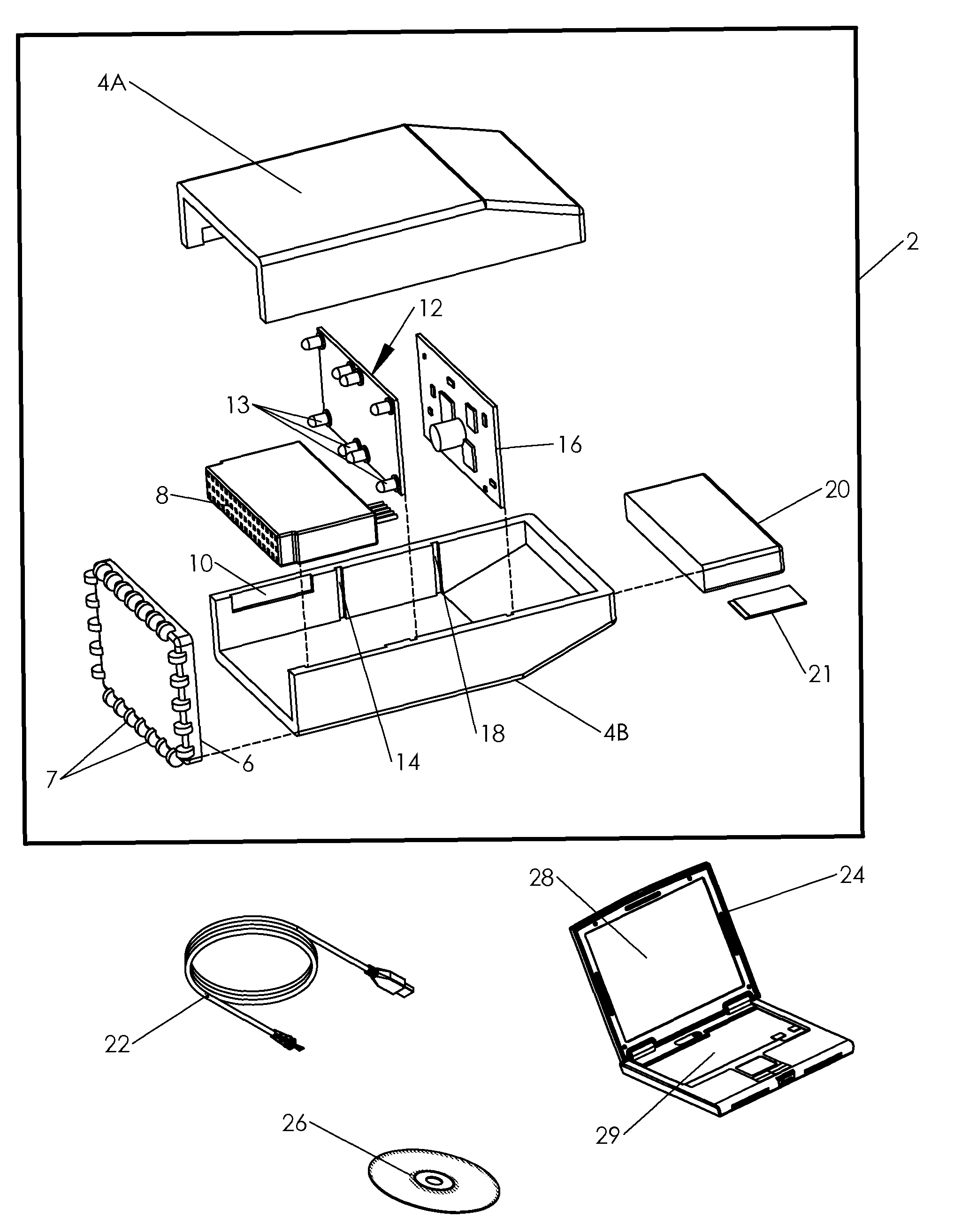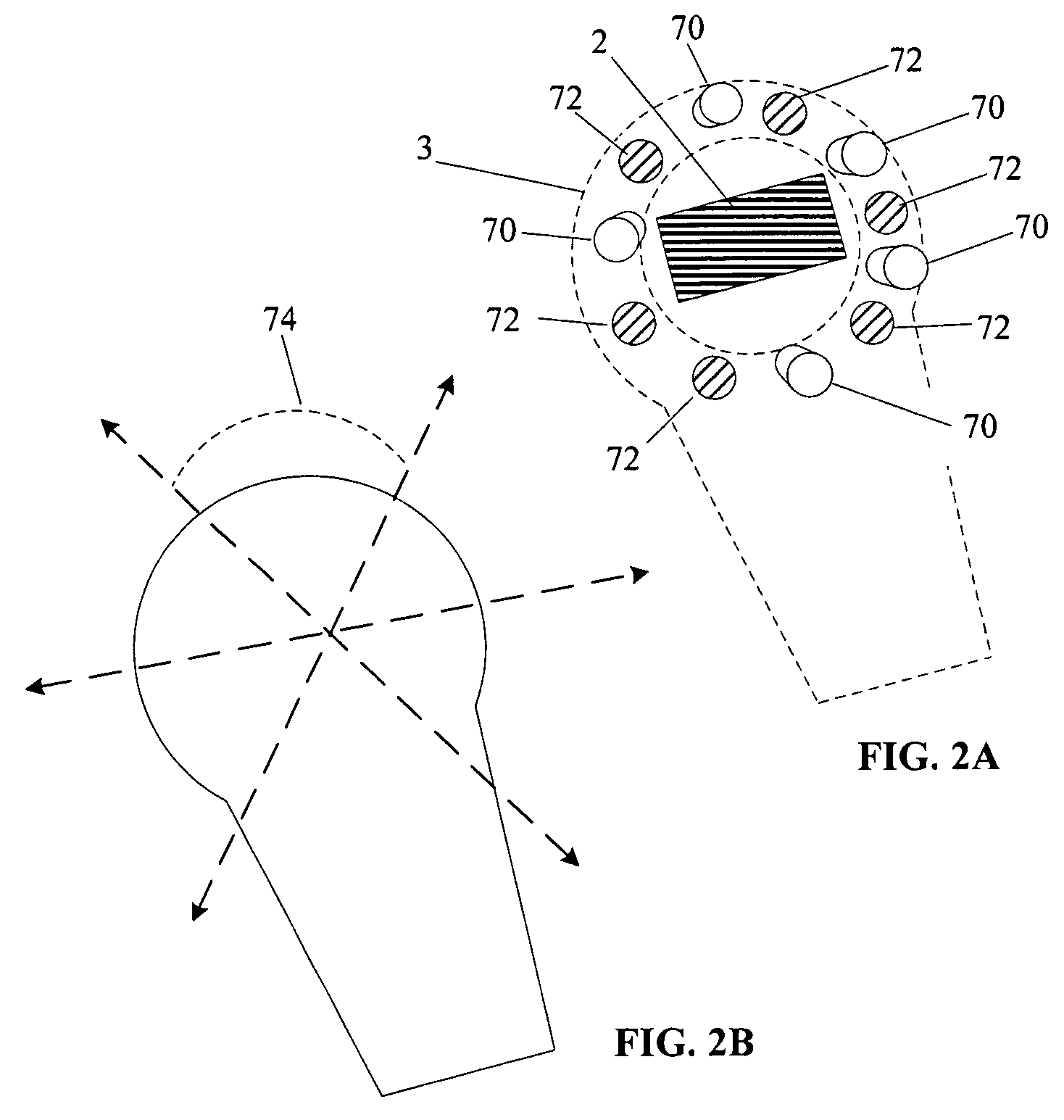System and method for providing simulated images through cosmetic monitoring
a technology of cosmetic monitoring and simulated images, applied in the field of automatic computer, can solve the problems of manual cosmetic application, laborious, expensive, harmful, etc., and achieve the effects of cosmetic enhancement, accurate positioning of the applicator head, and increased accuracy of the map and of the positioning of the applicator
- Summary
- Abstract
- Description
- Claims
- Application Information
AI Technical Summary
Benefits of technology
Problems solved by technology
Method used
Image
Examples
Embodiment Construction
Determining Head Position by Tracking Large and Small Features
[0052]The referenced U.S. patent application Ser. No. 11 / 503,806 describes a computer-controlled system and method for scanning an area of human skin or other feature and automatically identifying unattractive attributes in that area, calculating cosmetic enhancements, and automatically applying RMA, typically through inkjet printing, to make those enhancements to that area.
[0053]The U.S. patent application Ser. No. 12 / 028,835 “HANDHELD APPARATUS AND METHOD FOR THE AUTOMATED APPLICATION OF COSMETICS AND OTHER SUBSTANCES” describes an applicator head with raised contact means, such as pounce wheels, for moving an RMS applicator over a surface.
[0054]One aspect of the present invention is the creation of rich image files that can be displayed and further modified for use as simulated still and video 3D images, for example in video games and animations. In this patent application, Pix-Rich™ files are files that contain rich, ...
PUM
 Login to View More
Login to View More Abstract
Description
Claims
Application Information
 Login to View More
Login to View More - R&D
- Intellectual Property
- Life Sciences
- Materials
- Tech Scout
- Unparalleled Data Quality
- Higher Quality Content
- 60% Fewer Hallucinations
Browse by: Latest US Patents, China's latest patents, Technical Efficacy Thesaurus, Application Domain, Technology Topic, Popular Technical Reports.
© 2025 PatSnap. All rights reserved.Legal|Privacy policy|Modern Slavery Act Transparency Statement|Sitemap|About US| Contact US: help@patsnap.com



